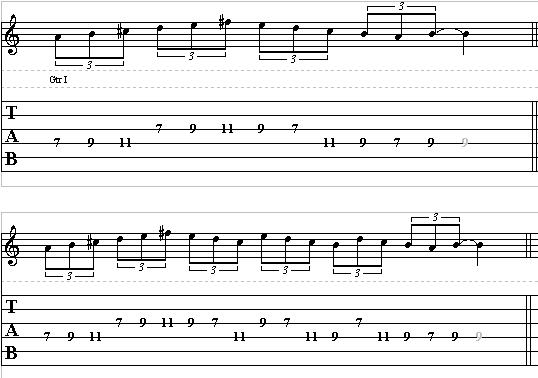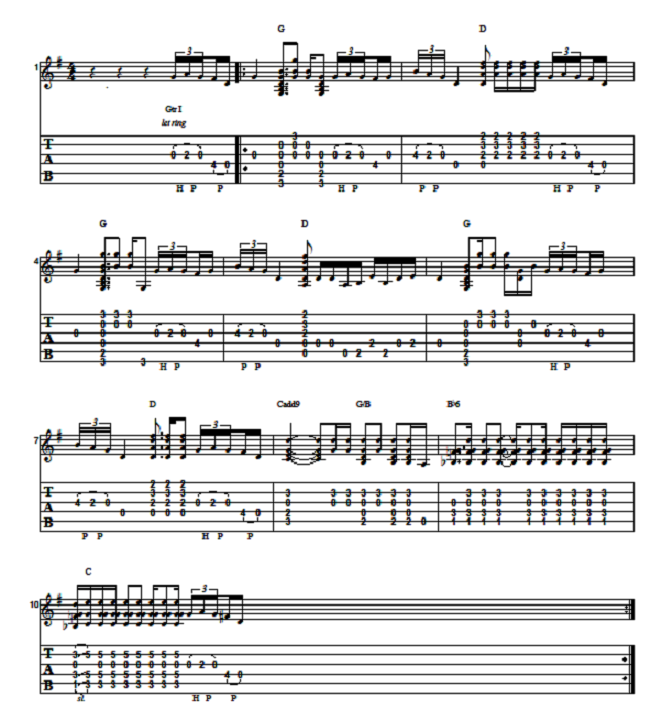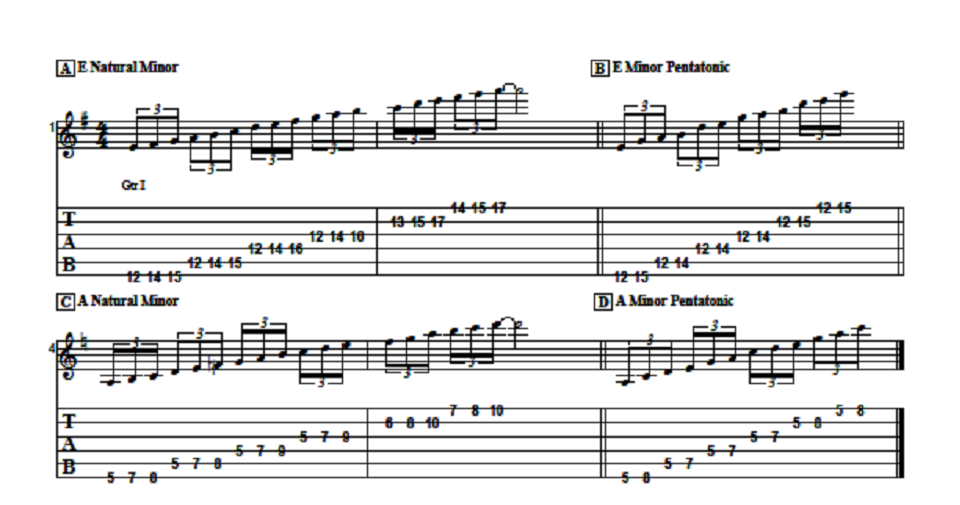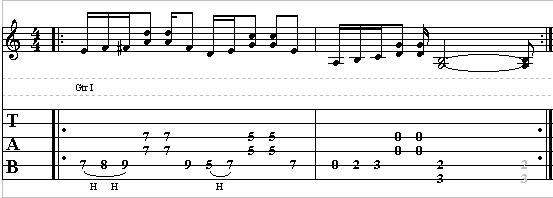Check out this free lesson from Guitar Control instructor Darrin Goodman on how to Combine These Scales For Easy Improvisation Improvement. Be sure to get the free tabs so you can easily follow along with this free how to Combine These Scales For Easy Improvisation Improvement lesson.
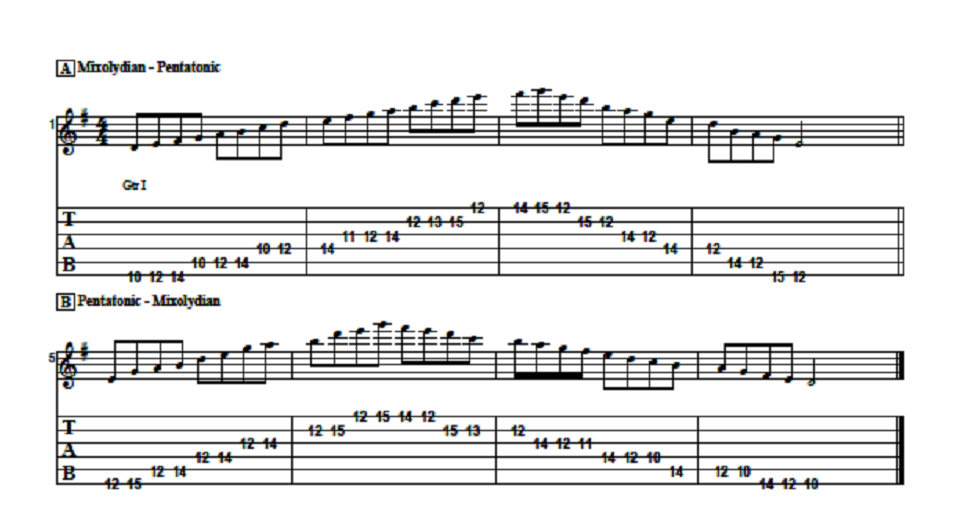
Introduction
Hey everybody how’s it going? This is Darrin with GuitarControl.com bringing you this video lesson. Today I want to show you an easy way that you can Combine These Scales For Easy Improvisation Improvement and to give you some alternative ways that you can utilize it playing licks or improvising or whatever it is that you’re doing. So be sure to click on the link in the description for the tabs and let’s get close up and take a look at how to Combine These Scales For Easy Improvisation Improvement.
The Pentatonic Scale
All right so we’re going to do this in the key of E minor, but this is a movable shape, so once you have this down you can move it around to whatever key you want to play it in.
So the first thing we want to look at here is we’re just going to use minor pentatonic pattern number one, the box pattern. So we’re going to be starting here on the 12th fret of the low E string and we’ve got 12 15 and then 12 14 on the A string, 12 14 on the D string, 12 14 on the G string 12 15 on the B string and 12 15 on the high E string… So I’ve already done a couple lessons on adding in passing tones and adding in the blue note and things like that; so if you haven’t already caught those you might want to check them out to just give you some more ammunition for your guitar arsenal, I’ll leave a link for that here. But what we’re going to be doing today is we’re going to be combining this scale, well I guess we’re not really combining, they kind of overlap each other, this E minor pentatonic scale with D Mixolydian scale.
The Mixolydian Scale
So for the mixolydian pattern, if you don’t already know, we’re going to be doing this here starting on the 10th fret, that’s where the whole pattern starts. So for this sequence and this is three notes for string, we have 10 12 14 on the low E string, 10 12 14 on the A string, 10 12 14 on the D string, 11 12 14 on the G string, 12 13 15 on the B string and 12 14 15 on the high E string…
Overlapping The Scales
Okay so we want to do is to go over how these two patterns overlap each other and this will give you a couple of extra notes that you can play that just kind of give you a broader area of where you can play on the fretboard for one, but then just a few more notes that you can add in when you’re soloing and stuff; these would be good notes to choose as your as your passing notes. Okay so we’re going to kind of do this is a sort of an exercise to get used to the idea. So we’re going to start off by ascending that Mixolydian scale, but rather than starting here on the 10th fret on the D, we’re just going to skip the first note and start here on 12. So we’re starting on E so we’re going to go 12 14 on the E string to 10 12 14 on the A string, 10 12 14 on the D string, 11 12 14 on the G string, 12 13 15 on the B string and 12 14 15 on the high E string… And then what we’re going to descend that pentatonic pattern. So my first finger is already where it should be here on the 12th fret of the high E string and my fourth finger is already here on the 15th fret, so as soon as we get to the top of this then we’re going to just descend minor pentatonic number one… So you want to practice this ascending and then descending. So we’re gonna start by ascending the pentatonic scale and then descending Mixolydian… So what we’ve done here is we’re covering just a little bit bigger of an area, we’re going from the 10th fret to the 15th fret, so we’re kind of covering a little bit larger of an area of the fretboard, but by adding these in here it makes it easier to take like a common pentatonic style lick and something that’s more of a three note per string thing and kind of be able to switch back and forth between them. This will even work over a blues to add those notes in there and stuff.
Changing Keys
Okay so like I said before this is a movable shape. So let’s say we wanted to combine these scales in A minor. So we start here on the 17th fret of the low E string or we can start down here on the fifth fret as well, but the same idea, you just take the Mixolydian scale and you start a whole step below where your root note is on your pentatonic scale, so in this case we’ll be here on the 15th fret of the low E string, but we don’t want to start with that note because it’s G, so we’re going to start on the second note and they still hook together in the same fashion, you just move it around the fretboard wherever you want it to be. So as far as soloing ideas and stuff with this we could add in these extra two notes and make it a three note per string pattern here… and then we can go right back into a pentatonic type of thing. Now another thing I like to do with this is to flatten down a half step on the two notes on the G string, that brings us right back into Mixolydian, but it just sounds really nice that way… Now these aren’t notes that you’d want to sit on necessarily… it just depends on what it is that you’re playing over the top of. As you can see you can get a lot more mileage out of that pentatonic scale by adding in these passing tones. So if you combine this with the ones that we’ve done before, like with the blue note, then we can actually end up having… it almost gives it that kind of a harmonic minor sound or the Phrygian sound by adding in the notes in there like that. But take this idea and play around with it, have fun with it and see what new things you can get or alterations you can make with the licks that you’ve already done just by adding in those extra notes.
Conclusion
All right so I hope you enjoyed how to Combine These Scales For Easy Improvisation Improvement and you got something out of it. If you like the lesson give me a thumbs up leave me a comment down below if there’s something you’d like to see covered in a future lesson by either myself or one of the other instructors at GuitarControl.com. If you have not already done so please subscribe to the channel and click that notification bell so you don’t miss any of the content that we upload throughout the week. Well that is all I’ve got for you today. Thanks for watching Combine These Scales For Easy Improvisation Improvement and have a great day.
